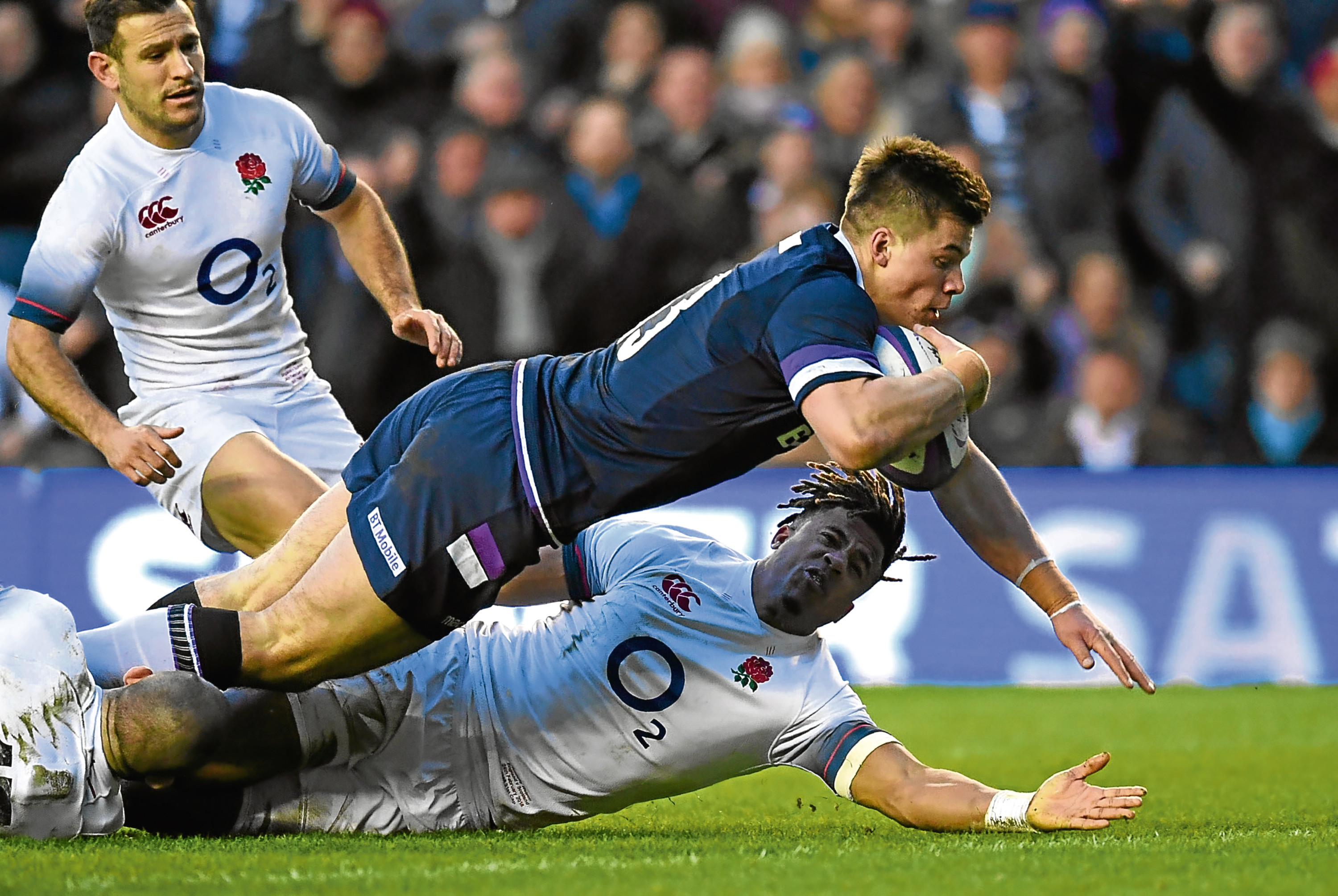
WHAT a match!
For the first time in 10 years, the Calcutta Cup returns to Scotland following the dramatic game at Murrayfield yesterday.
After scoring three great tries in the first half, Scotland managed to close out the game against a lacklustre England, who will travel home with their tails between their legs.
The foundation of the victory was laid, as it often is, by the forwards.
Stuart McInally was outstanding, as were the rest of the tight five, putting in countless tackles, while John Barclay and his back row colleagues worked tirelessly at the breakdown.
It was that facet of play that really proved to be the difference.
Scotland contested as if their lives depended on it, timing their counter-rucking perfectly and winning penalties and turnovers almost at will.
England simply weren’t accurate or combative enough at this phase of play – perhaps their one dimensional back row limited them, but much of that is down to attitude and physicality.
Finn Russell, awarded the man of the match, played considerably better than he had done in the first two matches of Scotland’s campaign.
His second-half performance was not as good as the first 40 minutes, but his return to form had much to do with Scotland’s success.
Some of his tactical kicking was sublime and some of his passing was pinpoint accurate and that really made a difference to Scotland.
Huw Jones was the star of the Scottish three-quarters, however – his two tries exemplifying his pace, power and ability to run fantastic lines.
The second try was quite superb, coming in at a great angle and then dragging two English tacklers with him over the try-line as he scored.
His defensive work was also outstanding as England sought to fight their way back into the match.
But it was a collective effort and one that the whole team and coaching staff can be really proud of.
It is widely known that many in the English establishment don’t respect Scotland which will have made the victory even sweeter for the home team and harder for the visitors to swallow.
Eddie Jones had talked up Scotland before the match, perhaps trying to lull the Scots into thinking that they would begin the match as favourites.
But it was the English who suffered from complacency, only showing a glimmer of what they could do for a few short periods in the second half.
The result was a historic win for Townsend’s team. Now attention will turn to Ireland, who are still on for a Grand Slam.
Playing away from home has become a challenge for Scotland in the Six Nations but, after this incredible victory, who would dare to write off the Scots now.

Enjoy the convenience of having The Sunday Post delivered as a digital ePaper straight to your smartphone, tablet or computer.
Subscribe for only £5.49 a month and enjoy all the benefits of the printed paper as a digital replica.
Subscribe